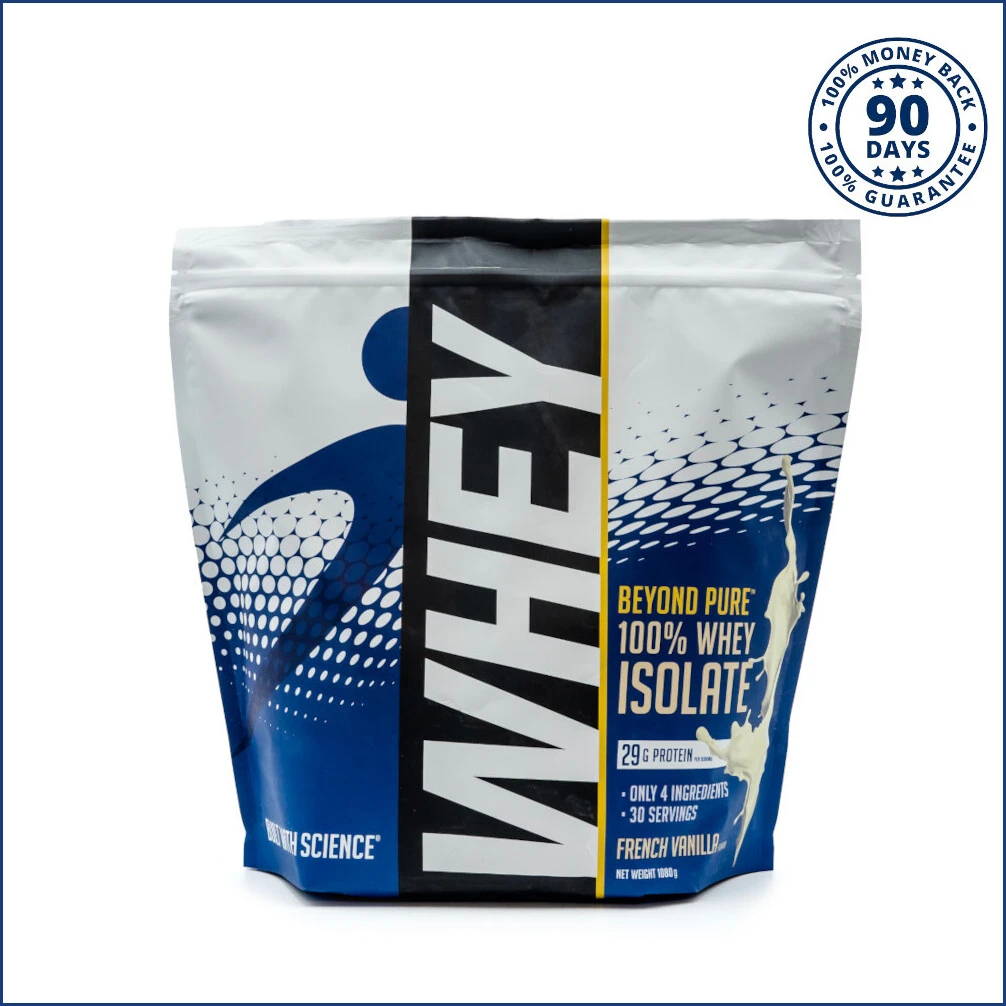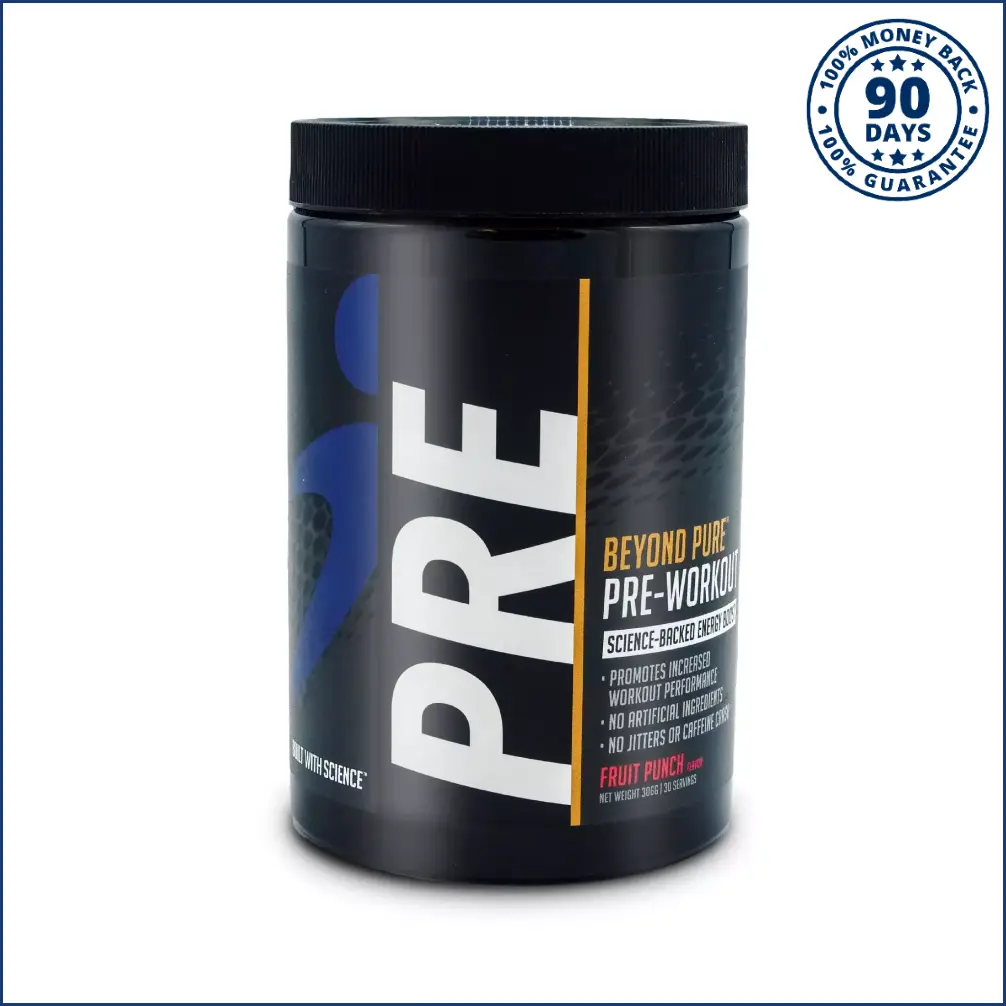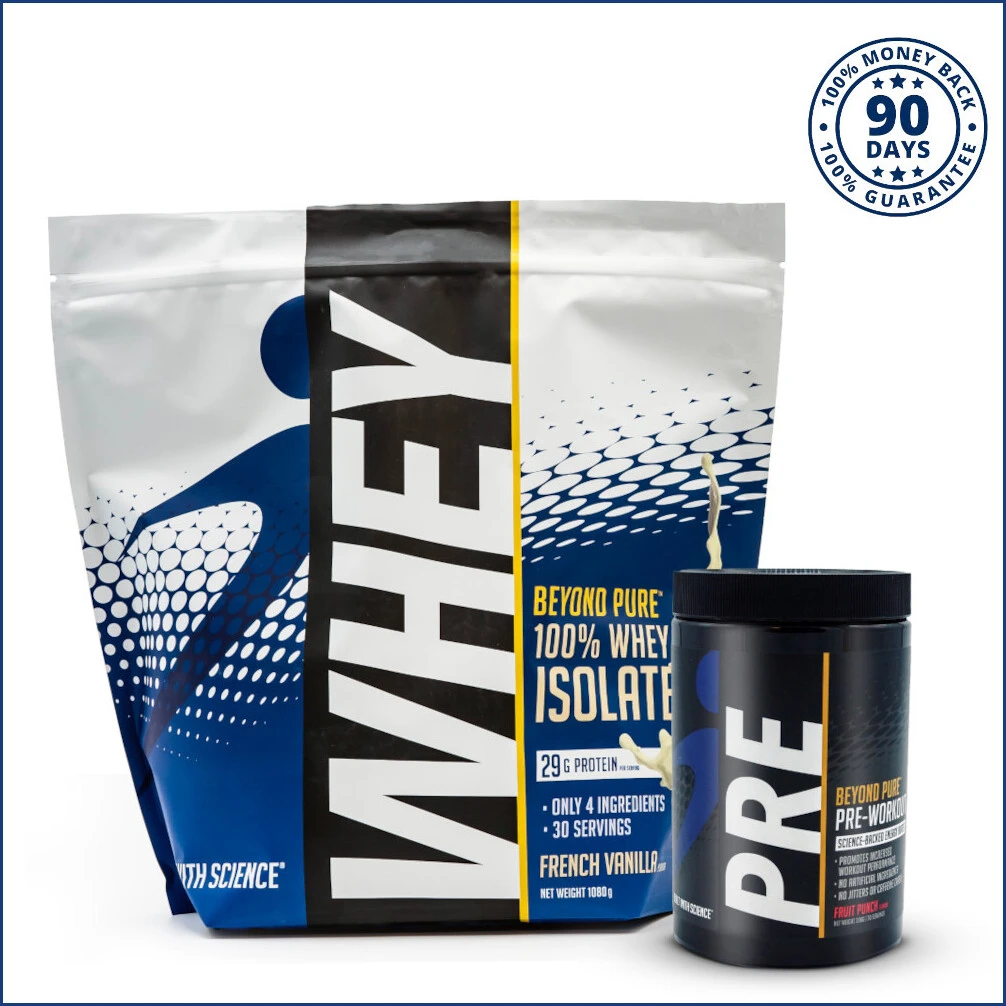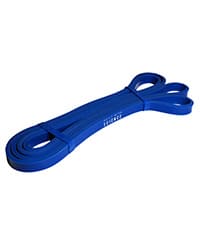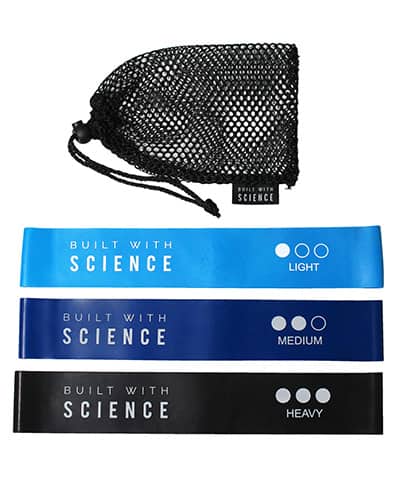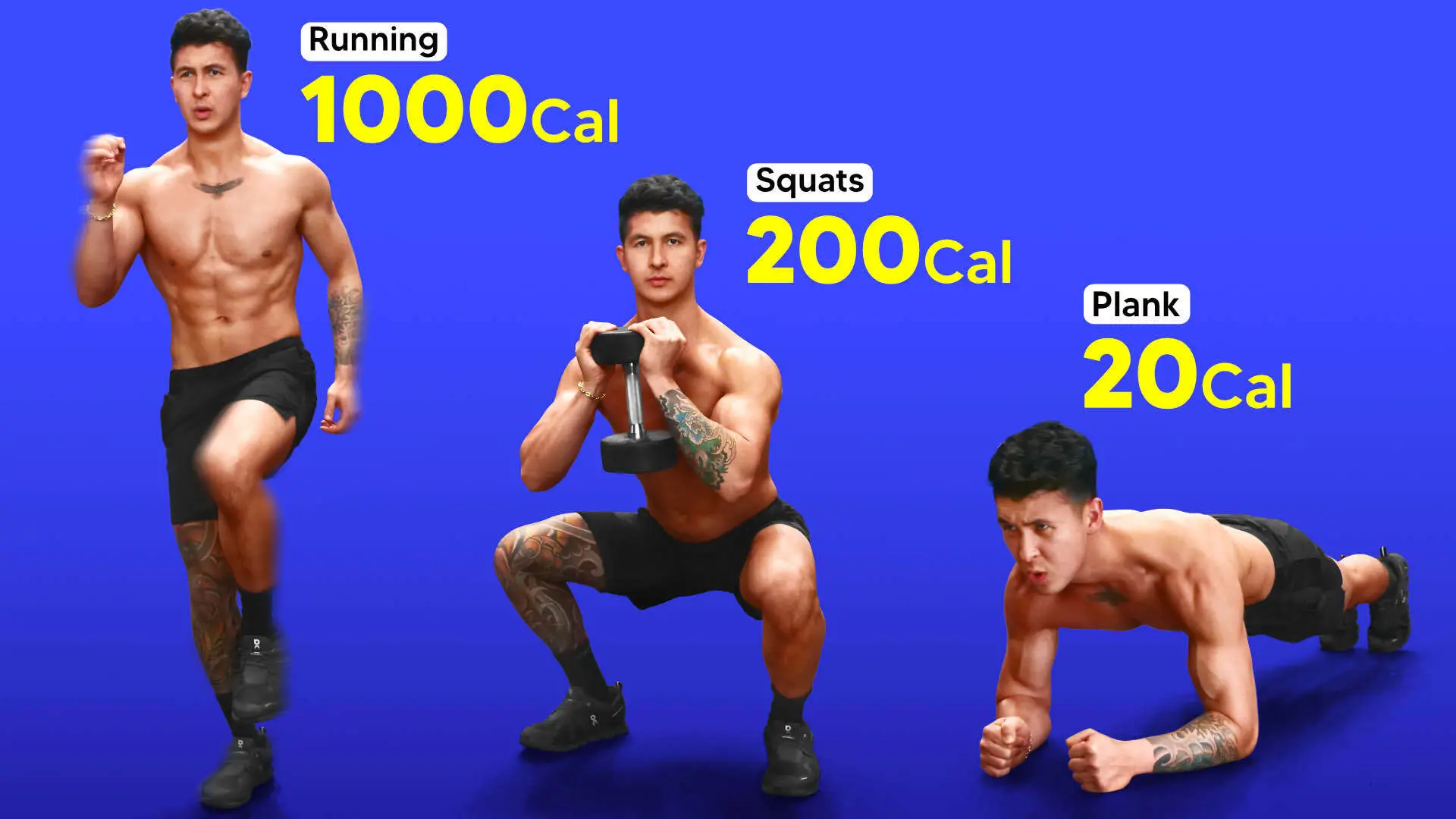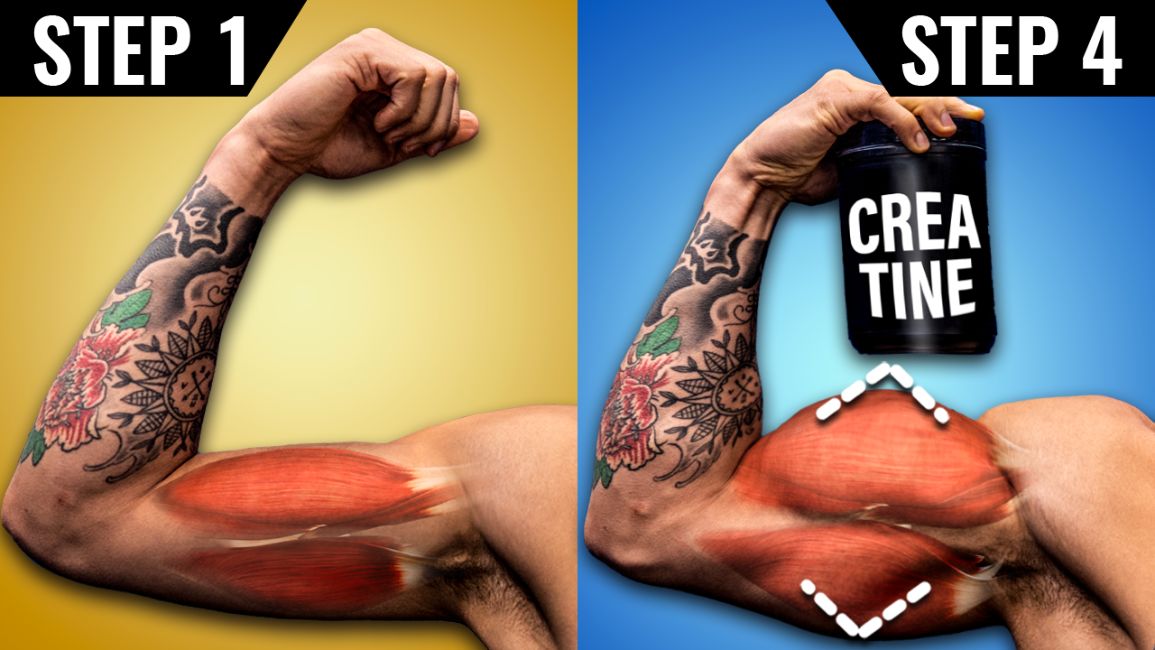
How To Use Creatine For Muscle Growth (4 Steps)
Find out how to use creatine for muscle growth in 4 easy steps. I cover dosage, timing, and more.
Over 1,000 studies have been done on creatine supplementation.
And their findings are consistent. Creatine is scientifically proven to be an effective and safe supplement that'll help you build stronger and bigger muscles.
But science also reveals that there’s a specific way to use it to maximize creatine's benefits and save money while you’re at it. Today, I’ll show you exactly how to use creatine for muscle growth in just 4 easy steps.
Of course, by now, you should know that supplementation isn't the only thing to take care of for best results. That's why I've designed every BWS program to be an all-in-one, science-based process (covering training, nutrition, and supplementation) that’ll get you to your dream physique FAST. And best of all? It's all rooted in science. For more information:
Click the button below to take my analysis quiz to discover the best program for you:
↓
Benefits Of Creatine Supplementation
Before we dive into step 1 of how to use creatine for muscle growth, though, let’s briefly discuss:
- What creatine is AND
- How creatine can help you build more muscle and strength
So, here's what you need to know.
Creatine is a substance we naturally produce. Our bodies use creatine as an energy source to power our muscles through the first 10 seconds or so of high-intensity activities.
Examples of such activities include sprints or a tough set of bench presses.
Supplementing with creatine potentially increases our natural creatine levels by about 30%. If maintained through consistent supplementation, this increase has been shown to provide a significant boost in power and strength during our workouts.
And this, in turn, has been shown to translate to significantly greater muscle growth over time.
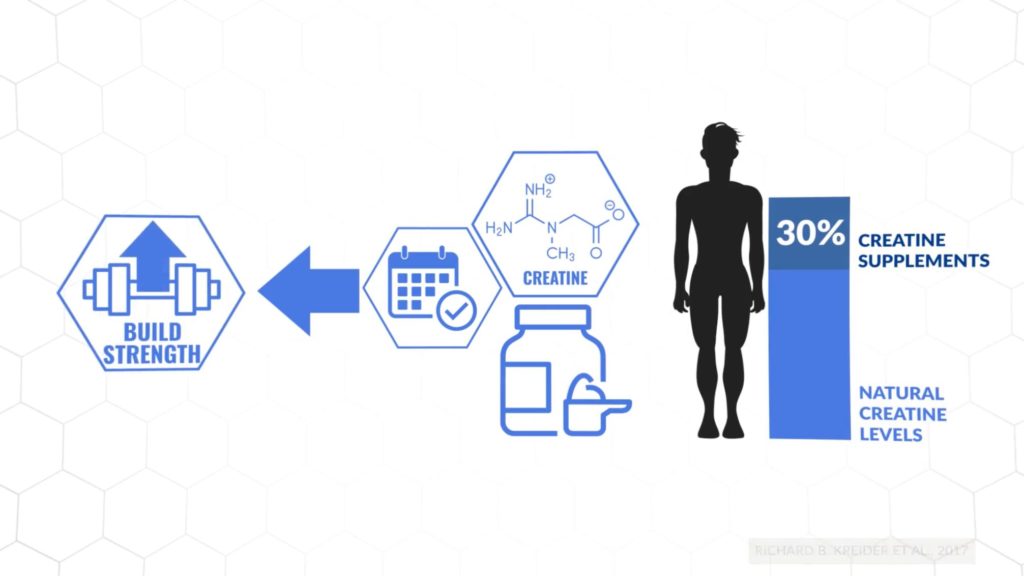
Creatine is effective. And it works.
But unfortunately, it's also very easy to waste a bunch of money on creatine without fully reaping its benefits. So, the first step to avoiding that is to make sure you pick the right type of creatine.
How To Use Creatine For Muscle Growth
Step 1: Pick The Right Creatine Type
Walk into a supplement store, and you’ll be recommended all sorts of fancy forms of creatine.
These are supposedly able to boost absorption or provide some kind of enhanced effect. But what does the research say?
Well, ever since my last creatine article (published a few years back), there have been some new contenders in the market. Luckily, a recent 2021 systematic review analyzed 8 different forms of creatine to determine which was most effective.
As you can see in the following table, the researchers also broke down the costs per serving for the different forms of creatine. Creatine monohydrate ended up being the cheapest, with buffered creatine costing almost 8 times as much.
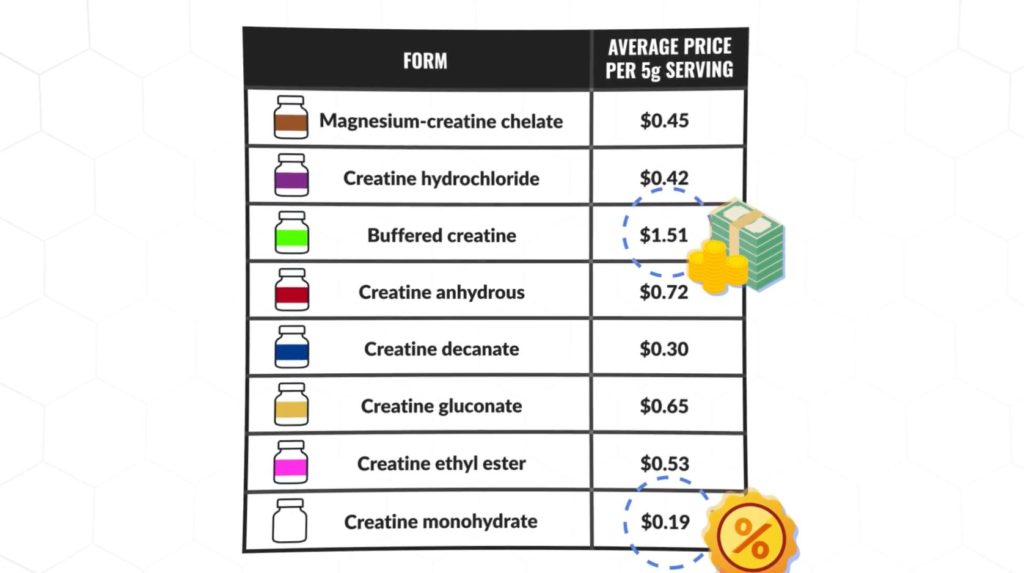
But more importantly, of the 8, which came out on top in terms of effectiveness?
Well, it turns out they all worked just as effectively at boosting muscle creatine levels. This makes sense. Plain old creatine monohydrate is neither associated with:
- Any absorption problems NOR
- Cause any notable effects that a more costly alternative would solve
So, this begs the question: why do these alternatives still exist in the market? Answer: they make for good marketing.
Companies try to one-up their competitors by claiming to have a proprietary formula that makes it seem like they’re more effective than others who sell a single-ingredient, “cheaper” form of creatine. Because of this, they can charge more for a “premium” form of the product.
Stick To Plain Old Creatine Monohydrate
However, their fancy forms have not beaten plain old creatine monohydrate.
That's regardless of what their marketing tries to convince you. So, what does this mean for you? Well, given that you could save over a dollar every single day from sticking to plain old creatine monohydrate, save your money and stick to that!
You can easily tell you’re picking the right creatine supplement if you look at its nutritional label. The only ingredient listed should be "creatine monohydrate".
Step 2: Get The Dosage Right
After you’ve picked up your creatine monohydrate, the next step you want to get right when it comes to how to use creatine for muscle growth is the dosage.
So, how much creatine per day do you need to build muscle? Well, it seems like there’s a lower limit you’ll want to meet — as highlighted in the following studies:
- Study 1: Showed that 2g/day of creatine monohydrate supplementation for six months failed to improve female swimminers' performance.
- Study 2: Showed that 1g/day of supplementation for a full year failed to improve muscle function or lean mass.
Meaning? 1-2g is likely too low of a dose.
How To Use Creatine For Muscle Growth: Not Too Little, Not Too Much
However, the typical dose of 5g per day, which is also the standard scoop size for most creatine products, may actually be overkill.
Illustrating this is a 2018 paper that compared the effects of supplementing with either 3g or 5g of creatine monohydrate per day.
Compared to the placebo, both groups experienced significant increases in strength. Based on the results, the researchers concluded that 3g per day is a sufficient dose for most lifters.
This makes sense, given that studies have shown a significant improvement in performance from creatine supplementation with dosages of around 0.03g/kg/day. For a 170lb individual, that amounts to just 2.3g of creatine per day.
This is less than half of the often recommended 5g scoop size. And would thus mean that your tub of 30 servings of creatine would last you two months — instead of just one.
So, what I’d recommend when it comes to how to use creatine for muscle growth is to stick to 3g per day.
That's a little less than the typical scoop size.
This creatine dosage is going to be more than enough for the vast majority of people. If you are on the much heavier side, then you may benefit from just a slightly higher dose based on your body weight.
Now with that being said, when you first start taking creatine, you may actually want to consider bumping up the dose far above this. This is where step 3 comes into play.
Step 3: Decide On A Creatine "Supplementation Protocol"
After you start taking creatine, it takes time for its levels in your muscles to gradually increase and fully saturate.
It doesn’t happen overnight. And, in fact, it often takes a couple of weeks to significantly increase.
Depending on how fast you’d like to experience supplementation effects, there are 2 protocols you can use when it comes to how to use creatine for muscle growth.
The first is the loading protocol.
It's a method that helps you saturate your muscles with creatine as fast as possible so that you can start reaping the benefits right away. Here's how you'd do it:
- Take 5g of creatine four times daily (a total of 20 grams per day)
- Repeat for 7 days to elevate your creatine stores
- Then, drop down to just 3g/day to maintain your now-elevated stores
The second is the non-loading protocol.
In contrast, it's a method that gradually increases your creatine stores. In this case, you simply stick to 3g/day from the start. Rather than taking just a week to elevate your stores, this protocol will typically take about 3-4 weeks before you start experiencing the benefits of supplementation.
Which Protocol Should You Pick?
Both protocols get you to the same point, so there isn’t necessarily a better one to pick from if we're talking about how to use creatine for muscle growth.
The loading method is advantageous if you’d like to reap the benefits as quickly as possible. It’s also the protocol I’d recommend if you’re dieting.
This is because as your creatine stores increase, your muscles will begin to store more water with it. And your body weight will increase. Taking a low daily dose will often result in a slow and gradual rise in your body weight over the first 2-3 weeks, which can skew your weight loss results.
On the other hand, loading for a week will cause a quick and drastic initial weight increase.
But you can easily use that as your new baseline bodyweight going forward, rather than having to wait several weeks to find out how creatine has affected your weight.
The only potential downside of a loading protocol?
Well, you may experience some digestive distress from taking so much at once. But this seems to be mitigated if you space out your 20 grams per day into multiple doses throughout the day.
So pick your poison. Follow whichever protocol you’ll be most consistent with. But as you do so, it’s important to understand:
- When to take it AND
- What to avoid taking it with
... To maximize its benefits. This is where step 4 comes in.
Step 4: Optimize Consumption
When I first started taking creatine, I was under the impression that it was best taken right before my workout to help power my muscles. I also read online that I should chug it with grape juice to get an added benefit.
I vividly remember being in my car, creatine tub and grape juice jug in hand, following the protocol, and then proceeding to have one of the best workouts of my life.
Since then, I’ve learned the placebo effect is a hell of a drug. But I’ve also learned the truth about how to use creatine for muscle growth (or, more specifically, just when and what I should take it with).
Like me, you're probably wading through tons of fitness misinformation - unsure of which really makes a difference in your journey to transform your physique. Well, there's a better, more straightforward way that'll get you to your destination fast. BWS programs. Step-by-step programs that equip you with a science-based nutrition and training program that'll help you look better in record-breaking time. For more information:
Click the button below to take my analysis quiz to discover the best program for you:
↓
How To Use Creatine For Muscle Growth: Timing Doesn't Matter
When it comes to how to use creatine for muscle growth, admittedly, there isn’t too much research that dives into the specifics of timing.
But remember: creatine doesn’t have an immediate effect.
This means that taking it pre-workout doesn’t provide any unique benefit. And it thus makes no sense why many supplement companies still include creatine as part of their pre-workout formula.
In fact, one study found a 1.7% difference in lean mass increases when taking it after your workout in comparison to before your workout. But the difference wasn’t significant by research standards.
As for what to take it with, there is some evidence that taking creatine with carbohydrates and protein increases saturation levels more than just taking creatine on its own. But this only really makes a difference during the initial saturation phase and is of lesser relevance during the maintenance phase.
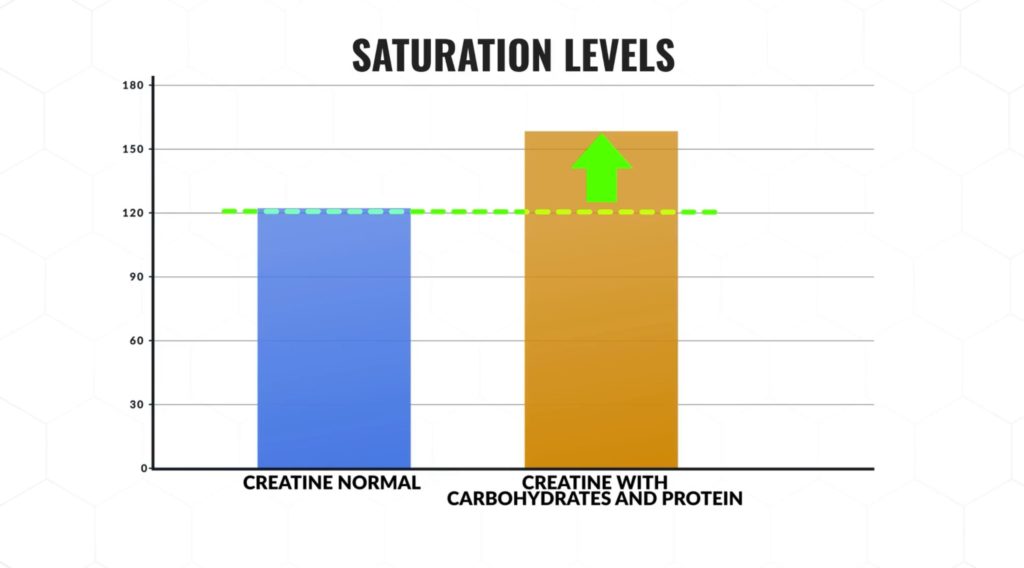
So, while taking it with a post-workout meal may have a very small benefit, what’s most important is that you’re taking it every day at a time you can be consistent with.
Watch Out For Your Caffeine Consumption
That said, there is a small possibility that caffeine consumption may actually hinder the benefits of creatine. This is illustrated by a recent 2021 paper and an excellent analysis of it by Dr. Eric Trexler.
Within it, he took the past 5 studies done on creatine and caffeine and found that in 4 of the 5 studies, creatine alone worked to produce the desired outcome, such as a boost in torque, strength, and hypertrophy.
However, in all of those 5 studies, when creatine was combined with regular caffeine consumption equivalent to at least 2-3 cups of coffee a day, despite the muscles still being saturated with higher levels of creatine, it failed to provide any performance benefits.
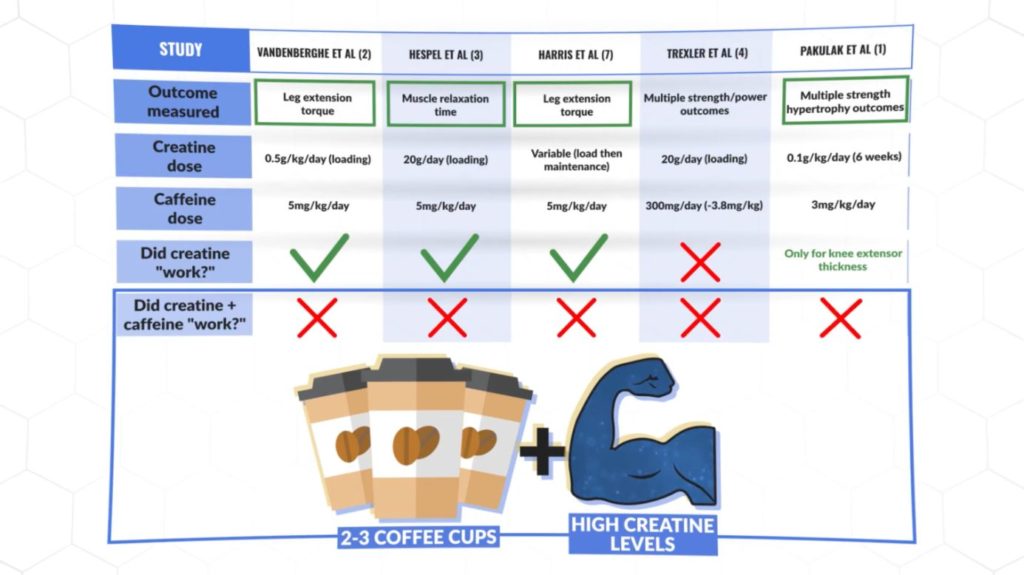
Dr. Trexler speculates it may either have to do with:
- Some of the opposing effects that creatine and caffeine have on our muscles from habitual consumption OR
- That taking both together can cause gastrointestinal discomfort (which would then negatively affect your workout)
But the research is still far from conclusive.
If you're extremely concerned about the potential interference between caffeine and creatine, though, the best recommendations are for you to ditch regular caffeine consumption.
That's because creatine tends to provide greater benefits over time.
Instead, save your caffeine consumption just for times or workouts when you need it the most. But that can be a tough ask for many. In this case, a more suitable alternative is to simply avoid taking creatine and caffeine together.
But again, research is far from conclusive. So, I wouldn’t stress too much about this.
Takeaway
So, I know we covered quite a bit, but here are the main key points when it comes to how to use creatine for muscle growth that'll help you get the most bang for your buck:
- Using creatine monohydrate, follow either the loading protocol or non-loading protocol to saturate your muscles and then take about 3g of it whenever you wish every single day to maintain it
- Then, after a few weeks, there are a few signs you want to look for to see if creatine is working for you. It won’t work for everyone. To find out if you're a responder, learn what you should see after fully saturating your muscles with creatine (or ~30 days of taking creatine, given the slowest loading protocol) here.
That being said, guys, creatine, just like any other supplement, is not magic. It doesn’t do the work for you. But when paired with the right training and nutrition plan, can help give you a bit of an edge.
And if you’re looking for a simple yet effective science-based program you can trust, that shows you exactly how to train and how to eat to transform your body as efficiently as possible, then simply take our analysis quiz to find the best program for you and your body below:
Click the button below to take my analysis quiz to discover the best program for you:
↓
Congrats, you now know how to use creatine for muscle growth! I hope you guys find this useful! Please don’t forget to show your support by giving me a follow on Instagram for more content. Thanks a bunch, and I’ll see ya next time!

